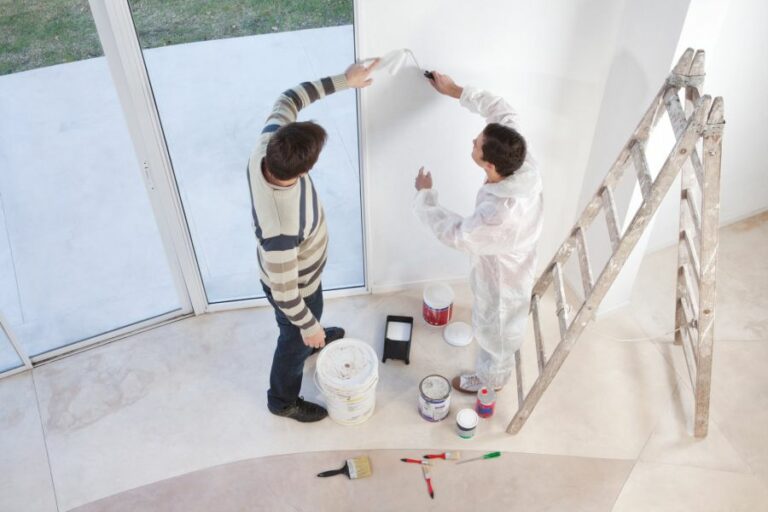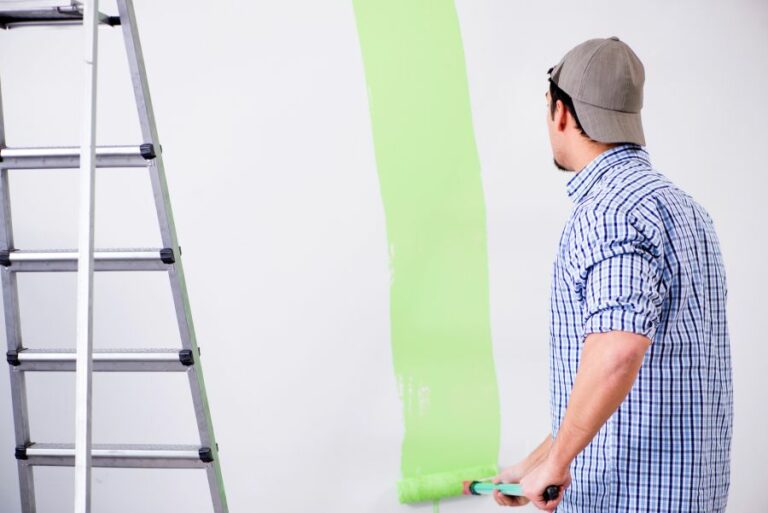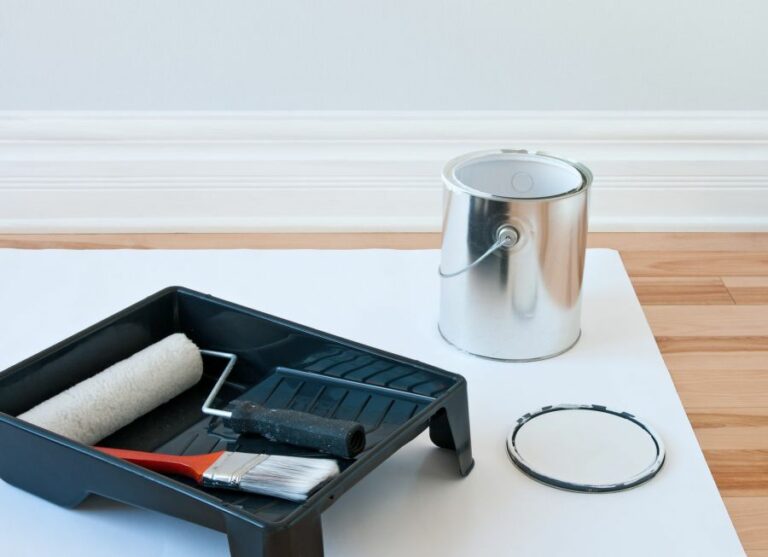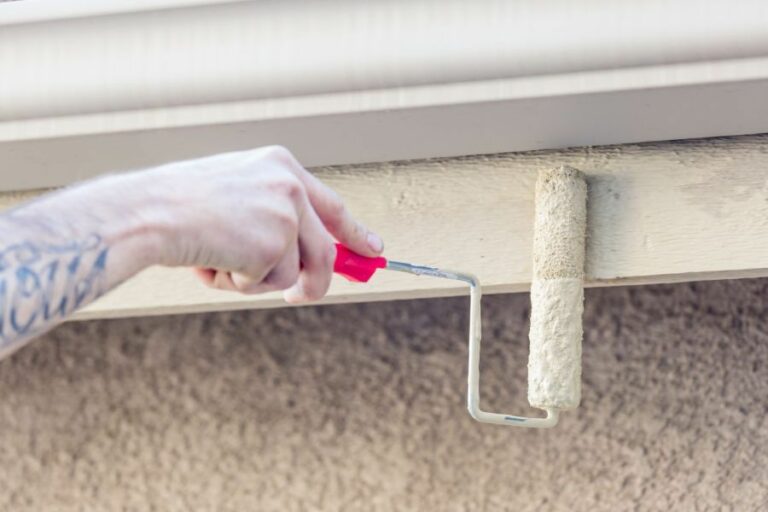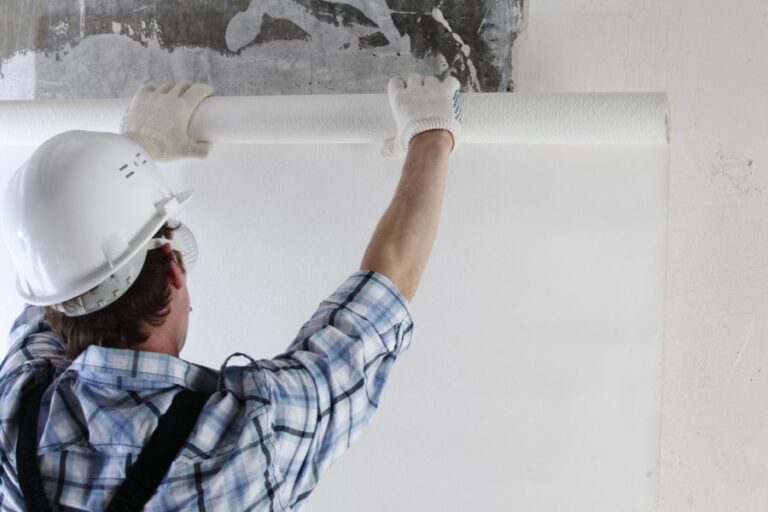Importance Of Surface Profiling In Paint Adhesion
Understanding the key factors contributing to a painting project’s success is essential for achieving a high-quality, long-lasting finish. One aspect that often goes unnoticed is the critical role that surface profiling plays in ensuring paint adhesion. Fortunately, we’re here to explain the importance of surface profiling and how it can make all the difference in your painting endeavors.
Importance of surface profiling in paint adhesion:
Surface profiling is crucial for paint adhesion as it involves measuring, evaluating, and modifying a surface to ensure proper paint bonding, which enhances durability and longevity. Surface roughness, cleanliness, and substrate composition impact adhesion. Hence knowing the appropriate profiling technique and monitoring the prepared surface is vital for preventing premature failure and achieving optimal paint performance.

Discover the crucial role surface profiling plays in ensuring proper paint adhesion for a flawless finish. Learn techniques and tips for effective profiling to ensure your paint job lasts. Read on for more insightful guidance backed by industry experts!
Contents
- 1 Significance of Surface Profiling for Paint Adhesion
- 2 Impact of Surface Textures on Adhesive Properties
- 3 Understanding Surface Profile in Paint Applications
- 4 The Crucial Role of Surface Preparation in Painting
- 5 Enhancing Paint Adhesion: Tips and Techniques
Significance of Surface Profiling for Paint Adhesion
• Introduction to Surface Profiling
Surface profiling is a critical aspect of the painting process that involves measurement, evaluation, and modification of a surface to ensure proper paint adhesion.
This procedure is essential for achieving the desired paint performance, preventing premature failure, and improving the overall lifespan of the painted surface.
Studies show that the surface profile can impact the long-term durability and performance of the paint system.
The National Center for Preservation Technology and Training highlights the significance of this process to preserve the integrity and aesthetics of historical structures and monuments.
• Role of Surface Profiling in Paint Adhesion
– Surface Roughness
The most critical factor in determining paint adhesion is surface roughness. A rough surface provides a larger surface area for the paint to adhere, increasing the mechanical interlocking bond between the surface and the paint.
Surface roughness also affects the paint’s ability to wet the surface, directly influencing the adhesion strength.
In my experience, the optimal surface roughness may differ depending on the type of coating used. Therefore, it is essential to consult the paint manufacturer’s guidelines to ensure proper surface preparation and profiling.
– Surface Cleanliness
Another factor that affects paint adhesion is the cleanliness of the surface. Any presence of contaminants such as dust, dirt, or grease will hinder proper paint adhesion.
Surface profiling includes a thorough cleaning of the surface to ensure the highest level of cleanliness and avoid potential adhesion issues.
– Substrate Composition
Understanding the substrate’s composition is vital for proper surface profiling. Different materials may require specific preparation methods to achieve optimal paint adhesion.
For instance, steel surfaces often need blast cleaning, while non-ferrous metals may require specialized etching treatments to promote adhesion.
As an experienced professional, I always recommend thoroughly investigating the substrate and following the paint manufacturer’s guidelines for the appropriate preparation method to avoid adhesion-related issues.
• Surface Profiling Techniques
There are several techniques used for surface profiling, each suitable for different types of surfaces and desired results. Some of the most common techniques include:
– Abrasive Blasting
Abrasive blasting is one of the most effective methods for profiling and cleaning metal surfaces. It involves projecting abrasive media at high velocities using compressed air or water to remove existing coatings, mill scale, and embedded contaminants.
The abrasiveness of the media and the blasting parameters can be adjusted to achieve the desired surface profile.
– Acid Etching
Acid etching is a surface profiling technique typically performed on non-ferrous metals like aluminum and galvanized steel. It involves the application of strong acids to chemically etch the surface, creating a microscopically rough texture that promotes paint adhesion.
– Mechanical Abrasion
Mechanical abrasion methods, including wire brushing, grinding, and sanding, are used to prepare various surfaces like cementitious substrates before painting.
These methods create the desired surface roughness by physically removing surface contaminants and roughening the surface.
– Power Tool Cleaning
Power tool cleaning methods, like needle gunning and rotary wire brushing, are typically used to remove rust, mill scale, and existing coatings from metal surfaces when abrasive blasting is not feasible or recommended. These tools create a more uniform surface profile, enhancing paint adhesion.
• Evaluating Surface Profile and Adhesion
To ensure proper surface profiling and paint adhesion, it is essential to regularly evaluate and monitor the prepared surface. Techniques for evaluating surface profiles include surface profile comparators, stylus profilometers, and replica tapes.
Adhesion tests, like cross-cut testing and pull-off adhesion tests, are performed to verify the paint system’s adhesion strength.
• Conclusion
In conclusion, surface profiling plays a vital role in determining the long-term success of a paint system.
By understanding the principles of paint adhesion, identifying the appropriate surface profiling techniques, and regularly evaluating the prepared surface, it is possible to achieve durable, long-lasting paint systems.
Understanding the importance of surface profiling and incorporating it into your painting project will prevent premature failure and ensure optimal paint performance, ultimately saving time, money and resources.
Impact of Surface Textures on Adhesive Properties
Surface roughness significantly impacts the effectiveness of adhesion, predominantly in bonding, sealing, and coating procedures.
Understanding the influence of surface roughness on adhesion is crucial for selecting the appropriate materials and methods for a wide range of applications.
• Surface Roughness: A Critical Factor for Adhesion
Surface roughness refers to the unevenness or irregularities on the surface of a material. These imperfections can be microscopic, and their magnitude and distribution directly correlate with adhesion effectiveness. The key factors that determine adhesion include:
- Surface energy
- Contact area
- Mechanical interlocking
- Surface contamination
The relationship between these factors and surface roughness can either promote or inhibit adhesion, depending on the specific application and materials used.
– Influence of Surface Energy and Contact Area on Adhesion
Surface energy, which is the excess energy at the surface of a material, can significantly influence adhesion. Higher surface energy often leads to improved adhesion, as it promotes better interaction between the adhesive and the surface.
Surface roughness can be advantageous in this instance, as it increases surface energy by providing more reactive sites for bonding.
In addition to surface energy, the contact area is another crucial parameter that affects adhesion. Surfaces with a higher degree of roughness offer larger contact areas for adhesion as their interfacial surface area is increased.
This results in improved mechanical interlocking and bonding between the adhesive and the rough surface.
– Role of Mechanical Interlocking in Adhesion
Mechanical interlocking, a critical factor for successful adhesion, refers to the physical engagement of two surfaces. In other words, it’s the degree to which the adhesive is able to penetrate the valleys and grooves of a surface’s roughness profile.
A rough surface can significantly enhance mechanical interlocking due to the increased surface area and the more intricate nature of the surface profile.
This phenomenon, which is common in applications such as coatings and sealing, often enhances adhesion. However, it is essential to maintain an optimal level of surface roughness, as overly smooth or excessively rough surfaces can actually diminish adhesion.
– Importance of Surface Contamination in Adhesion
Adhesion can be severely impacted by surface contamination, which originates from foreign particles, chemicals, or even residues on the surface.
Rough surfaces are naturally more prone to contamination as they provide more sites for foreign substances to accumulate. Thus, it is essential to ensure a clean surface to enable better adhesion.
Consequently, practitioners must strike a balance between achieving an adequate level of roughness to promote mechanical interlocking and minimizing contamination risks.
• Recommendations for Achieving Optimal Surface Roughness and Adhesion
Based on research and expert experience, the following recommendations can help professionals optimize surface roughness for effective adhesion:
- Choose appropriate materials: Select materials that can provide the right balance of surface roughness and other essential properties for a specific application.
- Employ suitable surface treatments: Implement surface treatments, such as sandblasting, etching, or plasma treatment, to enhance surface roughness without introducing contaminants.
- Ensure thorough cleaning: Employ thorough cleaning methods to remove contaminants from rough surfaces and improve adhesion.
- Conduct surface characterization: Use surface characterization techniques like profilometry or atomic force microscopy to evaluate surface roughness and understand its effect on adhesion.
- Monitor adhesive performance: Continuously monitor adhesive performance and make adjustments to surface roughness and treatment methods as needed.
For further reading and detailed information on surface roughness and adhesion, the University of Dayton Research Institute offers valuable resources through its Adhesion Science Program website.
• Conclusion
The relationship between surface roughness and adhesion is complex and multifaceted, with various factors like surface energy, contact area, mechanical interlocking, and contamination playing vital roles.
By understanding these factors and implementing recommendations for optimizing surface roughness, professionals can improve adhesion performance in numerous applications, ranging from bonding and sealing to protective coatings and beyond.
Understanding Surface Profile in Paint Applications
Surface profile is a crucial factor to consider when preparing surfaces for painting, as it impacts the overall adhesion, performance, and service life of the applied coating system. It refers to the roughness and texture of a surface, which help ensure a strong bond between the paint and the substrate.
• Importance of Surface Profile
Proper surface preparation is essential for achieving long-lasting and high-quality paint applications. A well-prepared surface profile can significantly enhance the adhesion, durability, and corrosion resistance of the applied coating. In addition, it provides the following benefits:
- Increased Surface Area: A rougher texture increases the surface area, enabling better mechanical adhesion between the substrate and the coating.
- Better Coating Performance: A suitable surface profile ensures optimal paint film thickness, which is essential for maintaining corrosion protection and other coating properties.
- Reduced Chances of Coating Failure: Properly prepared surfaces minimize the risk of issues such as delamination, blistering, and premature coating degradation.
• Measuring Surface Profile
To evaluate the surface profile, various methods and instruments can be employed, such as:
- Testex Tape: This pressure-sensitive tape measures the peak-to-valley height of a surface by creating a replica impression, which can then be quantified using a micrometer or a surface profile gauge.
- Stylus Profilometers: These instruments consist of a stylus, which is dragged across the surface to measure the surface profile in a continuous, linear fashion.
- Optical Profilometers: These non-contact devices measure the surface profile by using light to capture the substrate’s topography.
It is essential to select the appropriate method based on the substrate type, coating requirements, and industry-specific guidelines. Please refer to industry standards like SSPC-PA 17 for comprehensive guidance on measuring surface profile.
• Achieving the Desired Surface Profile
Various techniques can be applied to obtain the required surface profile, depending on the substrate material and the desired finish. Some common methods include:
– Abrasive Blasting
Abrasive blasting is widely used for achieving the desired surface profile on steel, concrete, and other substrates. It involves propelling abrasive materials, such as sand, steel shot, or crushed glass, onto the surface at high velocities.
This process removes contaminants, old coatings, and creates the desired profile.
– Grinding
Grinding is another method used for creating the surface profile. It involves using abrasive wheels or discs to mechanically remove the surface layer, resulting in a uniform and smooth surface profile.
This method can be applied to a wide range of materials, including steel, concrete, and plastics.
– Hand and Power Tool Cleaning
Hand and power tool cleaning techniques, such as wire brushing, sanding, and chiseling, can be used to create the desired surface profile.
These methods are mainly suitable for small-scale or localized surface preparation tasks, and they typically produce a relatively shallow profile.
– Acid Etching
Acid etching is a surface preparation method primarily utilized for concrete surfaces. It involves the application of a chemical solution (usually muriatic or phosphoric acid) to dissolve the top layer of the concrete, creating a rougher surface texture.
Acid etching should be used with caution, as improper handling can lead to safety hazards and undesirable surface conditions.
• Key Considerations for Surface Profile
When preparing a surface for painting, it is essential to consider the following factors:
- Coating Specification: The desired surface profile should be in-line with the requirements specified by the coating manufacturer.
- Substrate Material: Different substrate materials require distinct surface profile levels and preparation techniques.
- Environmental Conditions: Factors such as humidity, temperature, and the presence of contaminants should be considered when selecting the appropriate surface profile and preparation methods.
• Recommendations for Optimal Surface Profiles
Based on my experience, I recommend the following practices for achieving the desired surface profile:
- Follow Industry Standards: Adhere to relevant industry standards, such as SSPC-SP and NACE No. 5, for guidance on surface profile requirements and preparation methods.
- Consult Coating Manufacturers: Obtain and follow the coating manufacturer’s specifications and recommendations for surface profile levels and preparation techniques.
- Perform Quality Control: Utilize appropriate measurement methods and instruments to ensure the achieved surface profile matches the specified requirements.
In conclusion, understanding and achieving the desired surface profile is an essential aspect of surface preparation for painting.
By following industry standards, employing suitable techniques, and conducting thorough quality control, one can significantly enhance the adhesion, durability, and overall performance of the applied coating system.
The Crucial Role of Surface Preparation in Painting
Painting is more than just choosing the right color and applying it to your walls. It is a process that demands attention to detail, and surface preparation is one of the most critical aspects.
No matter what type of painting project you are working on, whether it is residential, commercial, or industrial, neglecting the surface preparation stage can lead to disappointing results.
• The Role of Surface Preparation
Surface preparation is a crucial step in ensuring that paint adheres properly to the substrate. It involves cleaning, repairing, and priming the surface to provide a smooth and stable foundation for paint.
Without adequate surface preparation, the paint may not bond well with the substrate, leading to peeling, flaking, and other issues that can diminish the aesthetics and longevity of the paint job.
– Protecting the Substrate
One of the main reasons for painting a surface is to protect it from environmental factors such as weathering, corrosion, and ultraviolet (UV) radiation. To achieve this purpose, a strong bond between the paint and the substrate is essential.
Proper surface preparation ensures that the paint can firmly adhere to the substrate, forming a protective barrier that can resist wear and tear, thereby increasing durability.
– Ensuring Aesthetics
A well-prepared surface allows the paint to be applied smoothly and evenly, avoiding unsightly marks such as drips, sags, and brush strokes. When the surface is not adequately prepared, it can result in an uneven appearance and reduced visual appeal.
By investing time and effort in surface preparation, you not only enhance the longevity of your paint job but also ensure a professional finish that elevates the beauty of your space.
• Essential Steps in Surface Preparation
There are several steps involved in the surface preparation process, and these may vary depending on the nature of the substrate, the type of paint being used, and the environmental conditions.
– Cleaning
The first step in surface preparation is to clean the surface thoroughly. This involves removing dirt, dust, grease, and other contaminants that can interfere with the paint’s adhesion.
For exterior surfaces, pressure washing is an effective method for cleaning, while interior surfaces can be cleaned using a damp cloth or sponge.
In some cases, specialized cleaners may be necessary to remove stubborn stains or other residues. According to the Painting and Decorating Contractors of America, following the proper cleaning procedures is essential for a high-quality paint job.
– Repairing
After cleaning, it is crucial to assess the surface for any damages or irregularities. This may include cracks, holes, or areas affected by rot or corrosion. It is essential to repair these defects before painting, as they can compromise the paint’s integrity and cause issues down the line.
Depending on the extent of the damage, repairs may involve patching, sanding, or even replacing sections of the substrate.
– Priming
Once the surface is clean and repaired, it is time to apply a suitable primer. Primers serve several functions, such as sealing porous surfaces, providing a uniform base for the paint, and enhancing adhesion.
The type of primer required depends on the substrate and the paint being used. For example, if you are painting over a previously painted surface, a latex primer may be appropriate, while an oil-based primer might be necessary for bare wood.
Always consult the paint manufacturer’s recommendations or seek professional advice regarding the appropriate primer for your project.
– Sanding and Smoothing
After the primer has been applied, sanding and smoothing may be necessary to achieve a perfect surface.
This step helps to even out any rough spots, remove brush strokes, or eliminate any visible defects in the primer layer. It also provides better adhesion for the topcoat by creating a slightly roughened texture.
Be sure to use the correct grit sandpaper and follow proper sanding techniques to avoid damaging the primer or substrate.
• Expert Recommendations for Successful Surface Preparation
- Always plan your work and allocate sufficient time for surface preparation. Rushing through this step can result in a subpar finish and a shorter lifespan for your paint job.
- Use quality materials and tools for surface preparation. Investing in the right primer and using appropriate cleaning products can significantly improve the final results.
- Always follow safety precautions, such as wearing protective gear, when working with chemicals or power tools during surface preparation.
- Consider enlisting professional help, especially for complex projects or substrates that require specialized knowledge and tools for proper surface preparation.
In conclusion, surface preparation is a critical aspect of painting that significantly impacts the durability and appearance of the final result.
By understanding the importance of surface preparation and following the recommended steps, you can ensure a successful paint job that not only looks great but also stands the test of time.
Enhancing Paint Adhesion: Tips and Techniques
• Importance of Proper Paint Adhesion
Paint adhesion is the ability of a paint coating to bond and hold onto the surface it is applied. Proper paint adhesion is crucial, as it ensures the paint’s longevity, durability, and resistance to cracking, chipping, and peeling.
Ensuring strong paint adhesion will not only create a flawless finish but also protect surfaces from environmental factors and wear.
• Choosing the Right Paint
The first step to improving paint adhesion is selecting the appropriate paint and primer for your project. Choose a paint that is specifically designed for the surface you plan to work on and compatible with the substrate to ensure maximum adhesion.
Additionally, using a high-quality primer or bonding agent relevant to the surface material will help create a superior bond between the paint and surface.
Consult the paint manufacturer’s recommendations or seek advice from a professional in the field to make sure you’re using the correct products for your project.
The Environmental Protection Agency (EPA) recommends using a primer with low volatile organic compounds (VOCs) to reduce environmental impact and potential health risks.
• Surface Preparation Techniques
– Cleaning the Surface
Before applying paint, ensure the surface is clean and free of all debris, dirt, grease, and other contaminants.
Cleaning can be done using water, a mild detergent, and a scrub brush. For metal surfaces, use a degreaser to remove any oil or grease that may be present. Failing to properly clean the surface can prevent the paint from adhering to the surface and lead to adhesion failures.
– Sanding the Surface
Sanding the surface makes the surface profile rougher, allowing the paint to adhere more effectively. Utilize coarse-grit sandpaper or a sanding sponge for surface preparation, and then follow with fine-grit sandpaper to smooth out the texture.
Always sand along the grain when working on wood surfaces to avoid creating uneven textures, which can affect the final finish.
– Addressing Previous Paint Layers
Check for any loose, flaking, or peeling paint on the surface. If present, make sure to remove it using methods such as scraping, sanding, or using paint removers. Leaving old, failing paint in place can cause the new paint’s adhesion to be compromised, leading to uneven finishes and reduced durability.
• Applying the Primer and Bonding Agent
Applying a primer or bonding agent is an important step in improving paint adhesion. A primer acts as a barrier between the surface and topcoat, helping to promote better adhesion and sealing the surface to avoid issues such as paint absorption or bleed-through.
For surfaces that are particularly difficult to achieve good adhesion, such as plastics or glossy surfaces, using a bonding agent can be beneficial. The bonding agents add an extra layer of adhesion while improving the ability of the paint to stick to the surface.
• Proper Application Techniques
– Applying the Paint in Thin Coats
Apply the paint in thin, even coats to avoid buildup, which may lead to adhesion issues and an uneven finish. Using multiple thin coats allows for better drying and adhesion as opposed to thicker, single coats.
The thicker the coat, the longer the paint takes to dry, leading to increased chances of adhesion failures and sagging.
– Avoid Painting in Extreme Weather Conditions
Excessive heat, cold, humidity, and wind can negatively impact the paint’s drying process and adhesion. Always consult the paint manufacturer’s recommendations regarding temperature and humidity ranges for optimum performance, and avoid painting during extreme weather conditions.
– Use Proper Tools and Techniques
Utilize high-quality paint brushes, rollers, or sprayers to ensure a smooth, even application. Each tool has its specific technique, and when applied correctly, they aid in providing the right thickness and distribution of the paint.
Proper brush techniques, for example, involve using gentle pressure and painting in an estimated “W” motion. In case of airless spray applications, adjust the pressure, tip size, and techniques to achieve the best finish.
• Allow Adequate Drying and Curing Time
Ensure ample drying time between coats and heed the manufacturer’s recommended curing times. Rushing the process by applying additional coats before the previous one has dried can lead to adhesion problems and a flawed finish.
Drying times can be affected by various factors, such as ambient temperature, humidity, and the thickness of the applied paint. Keep those parameters in mind and be patient to achieve the best results.
By following these recommendations and investing time in selecting the right products and tools, proper surface preparation, and adequate drying times, you can significantly improve paint adhesion resulting in a long-lasting, professional-looking finish.
Step | Description |
|---|---|
Clean the surface | Remove dirt, grease, and other contaminants from the surface to ensure proper paint adhesion. |
Sand the surface | Lightly sand the surface to create a rough texture for better paint adhesion. |
Apply a primer | Use a suitable primer on the surface before painting to improve paint adhesion and durability. |
Select the appropriate paint | Choose a paint that is specifically formulated for the surface material and conditions, such as temperature and humidity. |
Follow the manufacturer’s instructions | Follow the recommended application methods, drying times, and number of coats for the best adhesion. |


